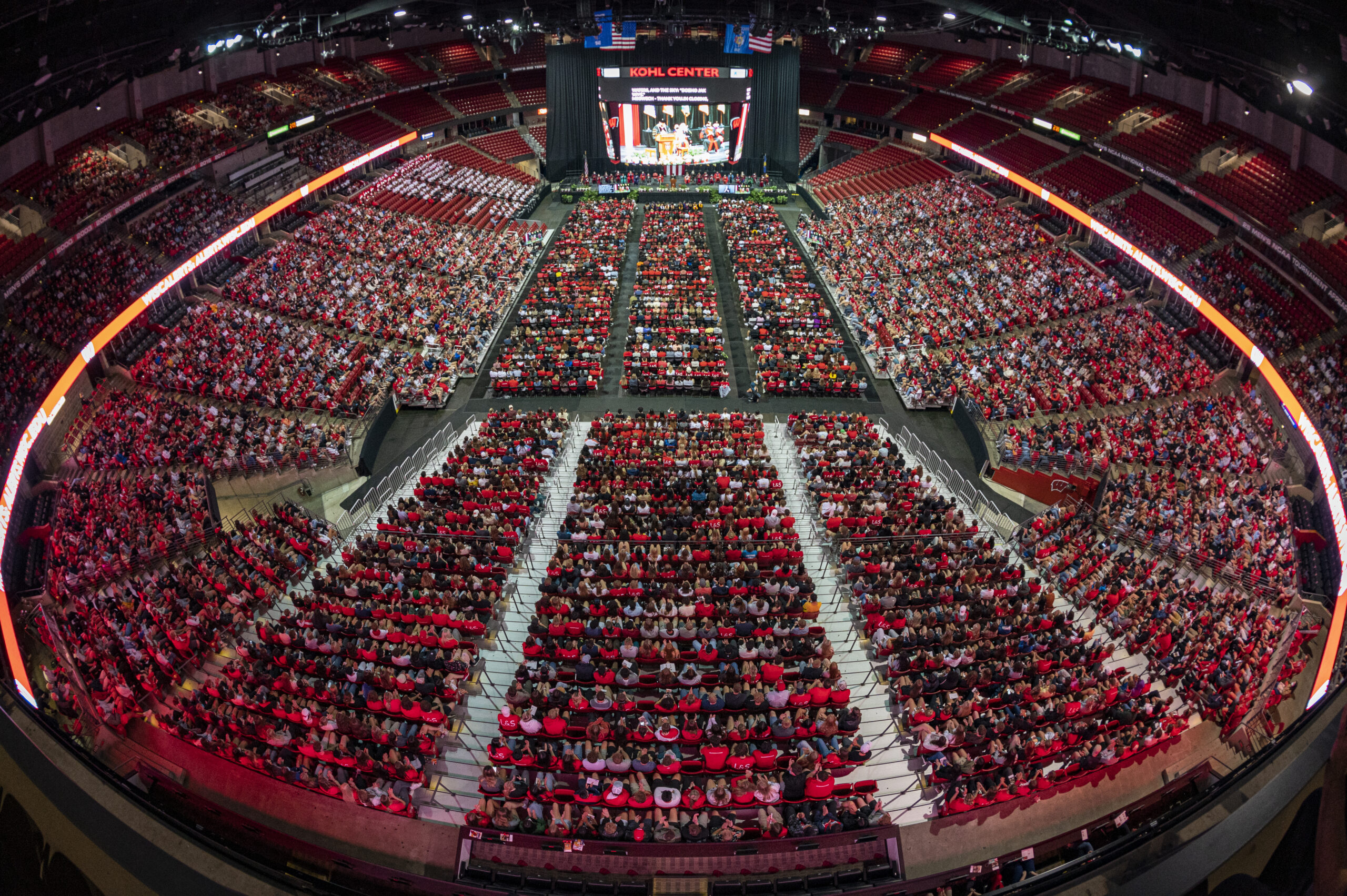
This year’s class of first-year students at the University of Wisconsin–Madison is the largest and most diverse in the institution’s history.
The university enrolled 8,465 first-year students this year, up from 7,306 last year. These students were selected from a record 53,829 applicants, up 17% over last year.
In this record-breaking class, 1,251 are underrepresented students of color, up from 989 last year. These students comprise 14.8% of the class, up from 13.5% last year.
And 2,133 fall into the broader category of all students of color, up from 1,692 last year. These students comprise 25.2% of the class, up from 23.2% last year.
Compared to fall 2020, this new first-year class includes 7% more African American students, 22% more Asian students, 34% more Hispanic students, and 34% more non-Hispanic students who identify with two or more races.
The class also includes 1,250 students who are eligible to receive need-based financial aid through the federal Pell Grant program — the highest number in a first-year class to date. Pell Grants play a critical role in expanding college opportunity for historically underserved populations. This growth reflects UW–Madison’s ongoing commitment to be a driver of upward economic mobility.
Learn more about the incoming class of fall 2021.

Record number of new scholars join DDEEA programs
The undergraduate programs in the Division of Diversity, Equity & Educational Achievement (DDEEA) saw a new high-water mark of incoming scholars as well.
The division welcomed 419 new scholars this fall, up from the previous high of 415 in 2020. That group includes 404 first-year students, up from the previous year’s record of 397.
The undergraduate student scholarship and service programs in the division are the Center for Educational Opportunity, the First Wave Hip Hop and Urban Arts Learning Community, the Mercile J. Lee Scholars Program, the Posse program, the Precollege Enrichment Opportunity Program for Learning Excellence (PEOPLE), and the Ronald E. McNair Postbaccalaureate Achievement Program.